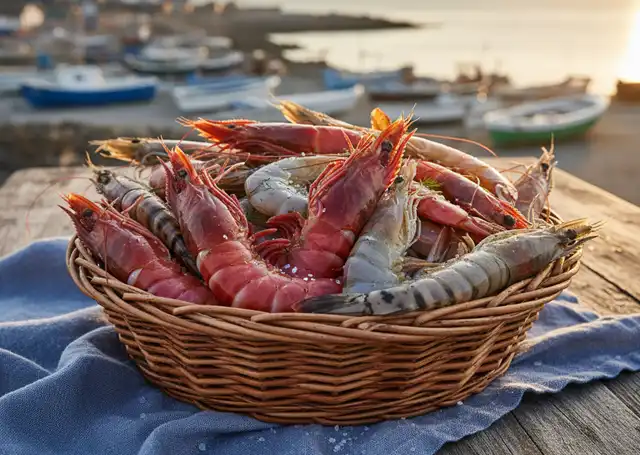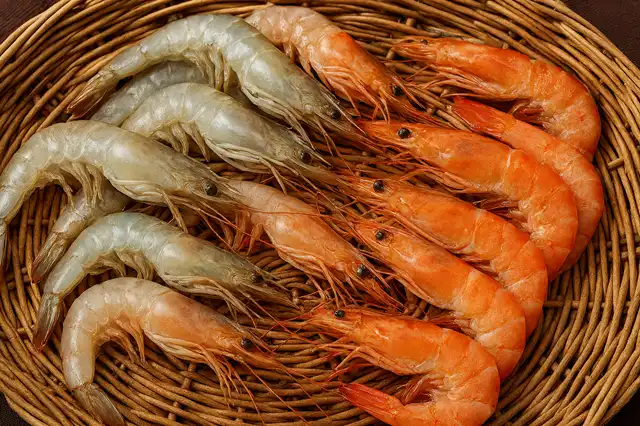The Science Behind STPP: Preventing Autolysis and Moisture Loss in Shrimp
The Science Behind STPP: Preventing Autolysis and Moisture Loss in Shrimp
Understanding Shrimp Autolysis
Shrimp autolysis, or self-digestion, is a natural enzymatic process that begins immediately after harvest and represents one of the seafood industry’s most significant quality challenges.
This degradation occurs when the shrimp’s own digestive enzymes break down its tissue structure, leading to mushiness, discoloration (particularly melanosis or “black spot”), and off-odors that render the product unmarketable.
The primary culprits behind shrimp autolysis are proteolytic enzymes, particularly those concentrated in the hepatopancreas (the digestive gland). When a shrimp dies, cellular integrity breaks down, releasing enzymes like trypsin, cathepsins, and polyphenoloxidase into the surrounding tissue.
These enzymes aggressively attack proteins in the muscle tissue, causing rapid deterioration. The process accelerates at warmer temperatures and is particularly problematic because shrimp are typically harvested in tropical and subtropical waters.
Additionally, bacterial contamination compounds the problem. While autolysis is initially an internal enzymatic process, bacteria on the shrimp’s surface and gut quickly proliferate post-mortem, contributing additional enzymes and accelerating decomposition.
The combination of endogenous enzymes and microbial activity creates a narrow window for processors to preserve quality.
The Role of Sodium Tripolyphosphate
Sodium tripolyphosphate (STPP), with the chemical formula Na₅P₃O₁₀, has become the seafood industry’s solution to these challenges. This phosphate salt works through multiple mechanisms to preserve shrimp quality during processing, storage, and distribution.
Inhibiting Enzymatic Activity
STPP’s most critical function is its ability to inhibit the proteolytic enzymes responsible for autolysis. The compound achieves this through pH modification and chelation. When dissolved, STPP creates an alkaline environment (pH 9-10) that denatures many enzymes or shifts them away from their optimal pH range, significantly slowing their catalytic activity.
Furthermore, STPP chelates metal ions, particularly calcium and magnesium, which serve as cofactors for many proteolytic enzymes. By sequestering these essential minerals, STPP effectively starves the enzymes of the components they need to function, providing additional protection against tissue breakdown.
Moisture Retention and Texture Improvement
Beyond enzyme inhibition, STPP dramatically improves water-holding capacity in shrimp muscle tissue. The compound dissociates into polyphosphate ions that integrate into muscle proteins, particularly myosin and actin. This integration causes the protein filaments to swell and increases the space between protein strands, creating more room for water molecules to bind.
The mechanism involves both ionic interactions and changes to protein structure. Polyphosphate ions increase the net negative charge on muscle proteins, causing electrostatic repulsion between protein molecules. This repulsion opens up the protein matrix, allowing it to trap more water. The result is shrimp that appears plumper, has better texture, and maintains juiciness during cooking.
STPP also helps stabilize the protein structure itself, preventing the excessive protein denaturation that occurs during freezing and thawing cycles. This cryoprotective effect is particularly valuable for frozen shrimp products, which may undergo temperature fluctuations during distribution.
Antimicrobial Properties
While not a primary antimicrobial agent, STPP’s alkaline pH and metal-chelating properties create an environment less favorable for bacterial growth. By removing available metal ions that bacteria need for metabolism and creating pH conditions outside many microorganisms’ optimal range, STPP provides mild antimicrobial effects that complement refrigeration and other preservation methods.
Practical Application and Industry Standards
In commercial practice, shrimp are typically treated with STPP solutions (concentrations ranging from 3-10%, specific concentration should meet government requirement and depend on user’s own tests) through dipping or spraying shortly after harvest.
The treatment duration varies from a few minutes to several hours, depending on the desired effect and local regulations. Some processors incorporate STPP into ice slurries used for initial cooling, combining preservation with temperature control.
Regulatory agencies worldwide, including the FDA and EFSA, have approved STPP for seafood applications, though maximum residual levels are specified (typically 0.1-0.5% in the final product).
Proper labeling is required, with treated shrimp often marketed as “previously treated with a solution” containing sodium tripolyphosphate.
Conclusion
Sodium tripolyphosphate represents a multifunctional solution to the inherent instability of shrimp post-harvest.
By simultaneously inhibiting autolytic enzymes, enhancing moisture retention, improving texture, and providing mild antimicrobial effects, STPP extends shelf life and maintains the quality characteristics consumers expect.
While ongoing research explores alternative preservation methods, STPP remains the industry standard for delivering consistent, high-quality shrimp products to global markets.
Understanding both the biological basis of shrimp deterioration and STPP’s mechanisms of action illuminates why this compound has become indispensable in modern seafood processing.
(source: AI generated, reference only)
The Science Behind STPP: Preventing Autolysis and Moisture Loss in Shrimp
Reference Sources
- Autolysis of Pacific white shrimp (Litopenaeus vannamei) meat: characterization and the effects of protein additives
- Food Chemistry – “Polyphosphates in seafood processing: Effects on quality and preservation”
- Journal of Food Science – “Enzymatic autolysis in crustaceans: Mechanisms and prevention strategies”
- Food Research International – “Sodium tripolyphosphate: Functional properties in seafood applications”
- LWT – Food Science and Technology – “Water-holding capacity in seafood: Role of phosphates”
- Seafood Processing: Technology, Quality and Safety by Ioannis S. Boziaris (Wiley-Blackwell)
- Handbook of Seafood Quality, Safety and Health Applications edited by Cesarettin Alasalvar et al. (Blackwell Publishing)
- Chemistry and Biochemistry of Marine Food Products edited by Roy E. Martin and George J. Flick (AVI Publishing)
- FDA Code of Federal Regulations – Title 21, Part 182 (Food additives permitted for direct addition to food)
- FAO Fisheries Technical Papers – “Quality and quality changes in fresh fish”
- Codex Alimentarius – “General Standard for Food Additives: Phosphates”
- Institute of Food Technologists (IFT) – Technical papers on phosphate applications in food processing
- European Food Safety Authority (EFSA) – Scientific Opinion on phosphate food additives


